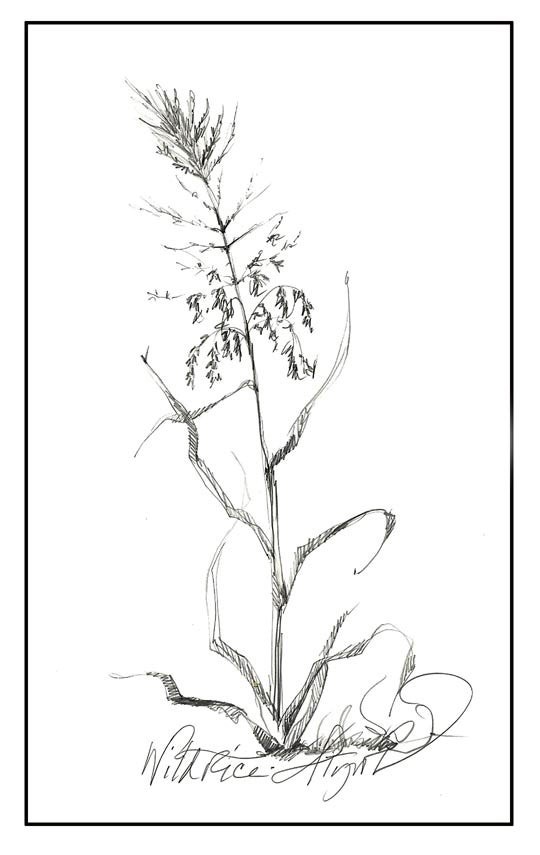
There is nothing wild about most wild rice. Most was grown in a “paddy” in California, harvested by machines, processed in factories, and finally wrapped in packages of cardboard and plastic. This so-called wild rice is as much a product of the industrial food complex as corn or soy. But there is truly wild rice out there. And there is an ancient tradition of gathering it that quietly persists across much of North America – even here, nearly invisibly, in New England.
While the flavorful grain of wild rice is familiar to most of us, the elegant plant from which it comes deserves to be better known. Wild rice is the common name of two closely related species (Zizania aquatica and Z. palustris). But despite their common name, they are not closely related to domesticated rice (Oryza sativa) at all. Together they are some of North America’s tallest native grasses, at times growing up to 10 feet above the surface of slow-moving waters. Their delicately arching flowers are arranged in two sexes at the top of each arching stem – males on the bottom, females on the top. In late summer and early fall the fertilized females swell to become the much sought after grain (called a coryopsis) which is designed to pierce the soft underwater mud like a harpoon.
Wild rice is usually associated with the Great Lakes region of North America, and certainly it is there that wild rice achieves its greatest productivity, covering acres and acres of wild waterways. There, it is famous as a staple food source for many Native American nations. But the range of this plant and its history as a food crop extends far beyond the Great Lakes, from the Great Plains to the eastern seaboard and from Canada to the Gulf of Mexico.
As a wild food enthusiast, I had often dreamed of traveling to the Midwest to gather this savory and eminently nutritious grain. Imagine my delight when I learned that it grows here in northern New England, right in my own backyard. I first found it along the northern shores of Lake Champlain, growing in dense stands along protected waterways. The dark green stalks stood out sharply against the paler, shorter stems of bulrushes. The marshes were full of interesting wildlife but not full of ripened grains of rice. The season for gathering rice is short, about 10 to 14 days at the beginning of September. I had arrived on the last weekend of August and found the grains still tightly bound to the stems. Two weeks later I met a man with a sack full of hairy, unprocessed grains that he had gathered in the Connecticut River just a few dozen miles downstream from my home.
Wild rice is found in many of New England’s waterways. But it has fared poorly in the Connecticut, our largest river. The extensive marshes that at one time lined the Connecticut River’s shores are gone. The stands in Lake Champlain persist in part due to protection by state and federal agencies that forbid motorized boat traffic, which can damage the delicate young leaves with their wakes. And while it is true that natural resource organizations have actively planted wild rice as a food source for waterfowl, other human activities have taken their toll on the uncommon and specialized habitat that these grasses require. Agricultural runoff is a danger to wild rice not just because of the chemical pollutants it carries, but because the silt and other particles in cultivated field runoff cloud the water and decrease the amount of light available to the germinating seeds. Dams up and down our rivers have changed the rhythm of the yearly water regimes upon which wild rice depends.
So far, the patches of wild rice that I have found in the northern Connecticut River are small, and along the northern sections of this river, wild rice has probably never been overly abundant. It prefers the calmer, more protected coves that are more common as the river approaches the coast. In years to come, I’ll try ricing the southern sections of the Connecticut where a few dense stands remain.
I will probably never find wild rice marshes large enough for practical harvest in the northern Connecticut River valley, yet I still seek the little patches out. They are remarkably productive ecosystems, critical stopovers for migrating birds on the Connecticut River flyway, and gracefully beautiful additions to the landscape. Even if one never eats a grain of wild rice, these marshes are places to be savored.


Discussion *